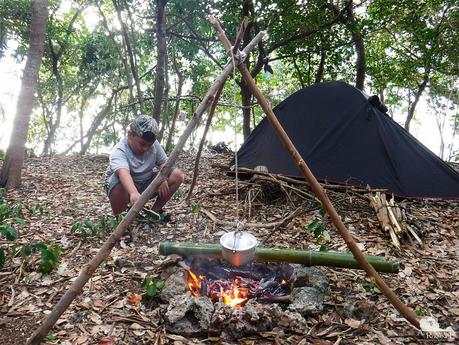
Mother Nature provides us with everything we need to survive. All that is required of us is a little bit of resourcefulness and a lot of respect to make use of her gifts. That is the essence of bushcraft, an outdoor discipline about thriving in the natural environment. With bushcraft, you learn to hunt, forage, track, make shelters, navigate, and more using natural resources and rudimentary tools.
Bluewater Sumilon Island Resort and Camp Red Bushcraft and Survival Guild, Cebu’s only bushcraft organization, invited us to join the Dolpo 2018 Summer Camp. This fun camp is organized for kids and parents who want to learn and enjoy the great outdoors. Dolpo 2018 is aimed to teach practical outdoor skills.
A gray sky and sporadic rainfall around the southern part of Cebu hounded us for the first few hours of the morning as we traveled more than a hundred kilometers from our home to Oslob, Cebu. The gray day continued as we crossed the mainland to Sumilon Island. But as we docked, the weather quickly improved, and the rainclouds parted to reveal a burning sun. By mid-morning, the sky became a brilliant dome of blue with thin, wispy cirrus clouds that are inadequate to shield us from blazing sunlight.
We took advantage of the fine weather by swimming around the Garden Eel Plaza and saying hello to colorful parrotfish.
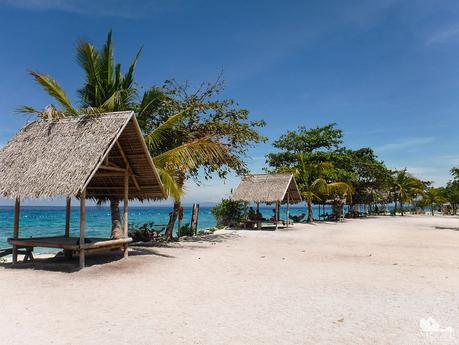
After a filling buffet lunch, we hiked to our campsite which is located southwest of the island. The guys at Camp Red were there, their hammocks and tents already pitched. Quiet, unobtrusive, protected from the winds, it is an ideal campsite.
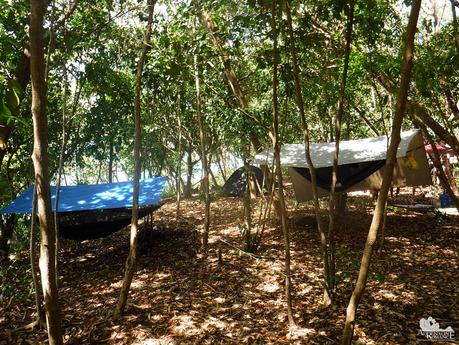
One of the nicest things about this campsite is that it offers a stunning view of the sea and mainland Cebu. We could simply go down and have a refreshing swim.
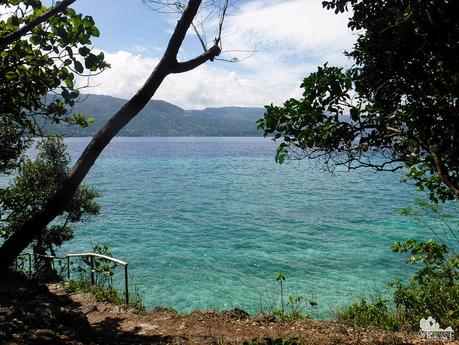
Although only a few signed up and most of the audience were adults rather than kids, the Dolpo 2018 Summer Camp began in earnest, facilitated by Camp Red. We sat on old tarps and enjoyed the natural surroundings. Our isolation meant that there were no distractions from other holidaymakers swarming the island.
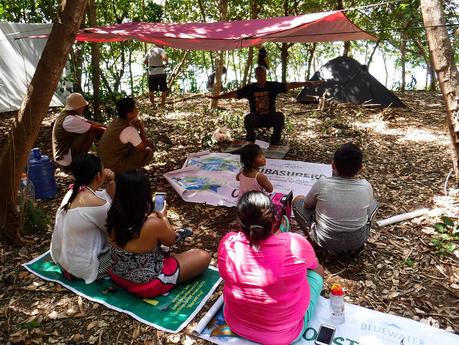
Knife Use and Care
The main speaker was Sir Jing who has several recognitions under his belt. He is the owner of the buscrafting blog Warrior Pilgrimage and one of the founders of Camp Red. He also mapped out and established the Cebu Highlands Trail and, together with Jonathan Apurado, was one of the only two people who was able to hike the entirety of the CHT. He is our guide of our ongoing CHT hike.
After explaining what bushcraft is, he introduced us to the knife. For most people, a knife is a deadly weapon if you discount its use in the kitchen. However, for outdoorsmen, it is a useful and versatile tool. Sir Jing’s discussion on knife usage, care, safety, and ethics made us realize just how important this tool is. In fact, we plan to buy one in addition to our Leatherman multi-tool.
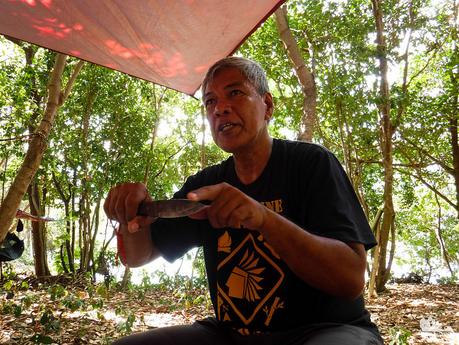
Sir Jing and most of the Camp Red members are avid knife collectors. These are just a few of Sir Jing’s collection, ranging from traditional to modern blades. All his knives are placed in tough leather, wooden, and carbon fiber scabbards when not in use. The scabbards not only protect the blade, but it also helps prevent injuries.
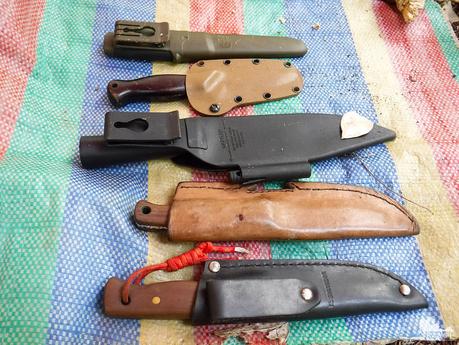
With a baton (can be a wooden tough stick or tree limb), you can use the knife to cut clean and neat notches. This is a better and safer technique than hacking.
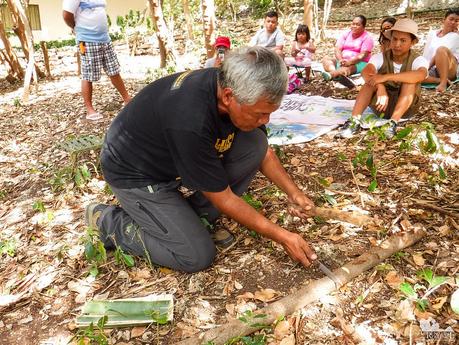
While Sir Jing facilitated the discussion, other members of Camp Red sawed off sections of bamboo for later use. They also gathered dried twigs and leaves as fuel for a cooking fire.
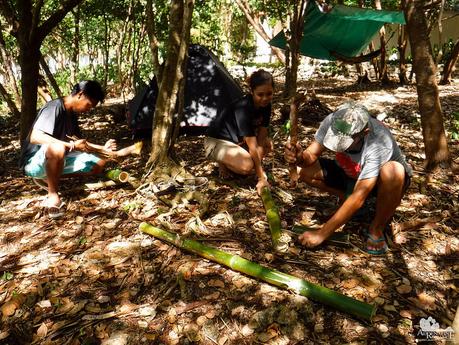
Austere Utensil Making
Once we got comfortable with the knife, we were ready to put it into use. Our first task was to make a simple spoon carved out of a piece of bamboo. Sir Jing first showed us how to do it safely and efficiently. It took him just 5 minutes to carve a usable spoon! Amazing!
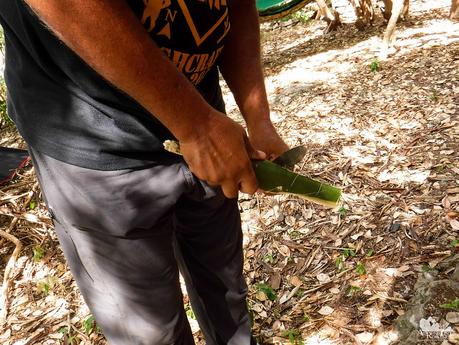
These are some of the spoons he carved a few months ago. The “sperm spoon” got its distinctive shape after he gave it a gentle heat treatment. He uses the big ones as laddles and spatulas.
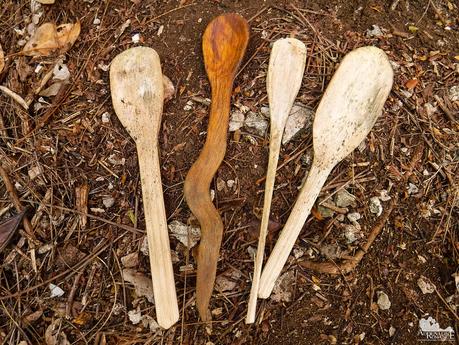
After the demonstration, it was time to make our own spoons. Because we were still awkward in handling wood and knives, we wore wool gloves to avoid getting splinters in our palms. For safety, Sir Ernie assisted our sole child participant Shaun in making his own spoon.
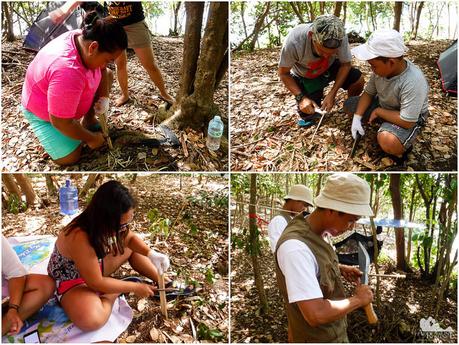
It took each of us around half an hour before we were able to whittle our bamboo pieces to a recognizable utensil. Shaun had the most beautiful spoon! Hahaha!
Sweetie’s spoon barely fits the criteria of a usable utensil. But it definitely did its thing when we tested it out during dinner. She sharpened the end so she could spear food items with it. Her bamboo spoon now has a place in our home kitchen. Hehehe!
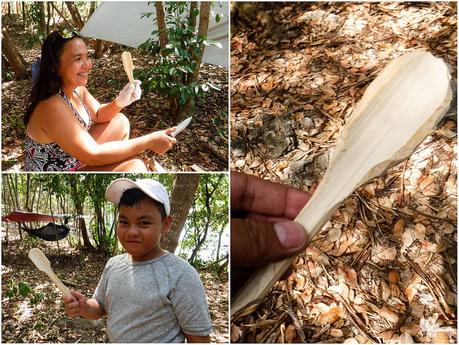
By sawing off segments of a mature bamboo stalk but keeping the end of each section intact, you can fashion each segment as a drinking cup. Cut a notch at the lip of the cup; this is where your nose fits when you drink from it. Stick a twig on the ground, and you now have something to keep your bamboo cup upright.
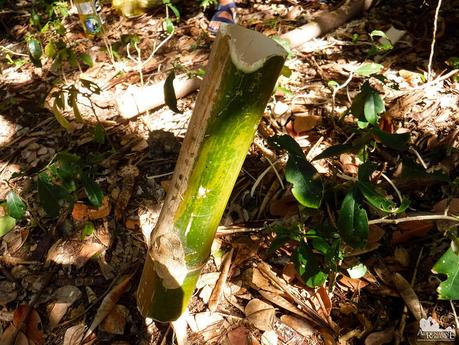
Carefully cut off a long rectangular hole in the middle of a segment of a bamboo stalk. Clean out the pulp, and whala! An austere cooking pot! Keep the segments intact so you can boil multiple foodstuff in one setting.
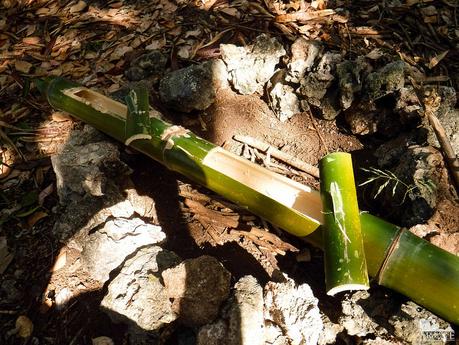
Multi-use Tripod
Many things in nature are so simple and unobtrusive that their use actually eludes us. But bushcrafters have eagle eyes for details, and coupled with resourcefulness, they can make useful things out of anything.
By tying the ends of three long sticks—one of which is longer than the others—you can have a tripod. You can use this tripod as a stable frame to hang a pot over a fire.
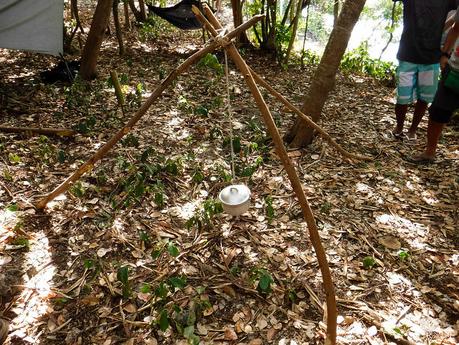
Fasten one end of your tripod’s long stick to a tree trunk and you now have a frame for your A-tent. Ingenious!
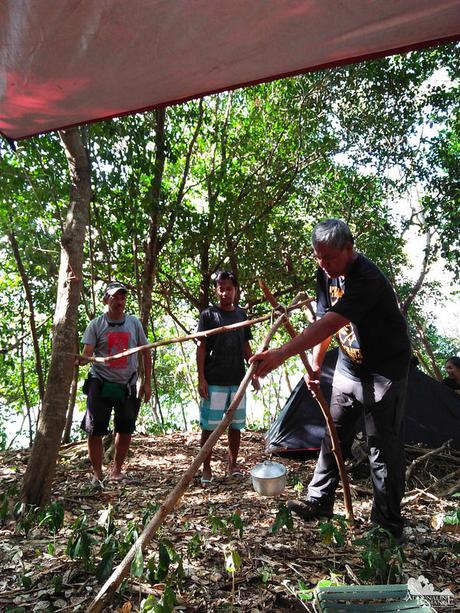
What can you do with two adjacent trees, some branches, and a long piece of nylon string? Well, you can create a makeshift shelf for your outdoor gear.
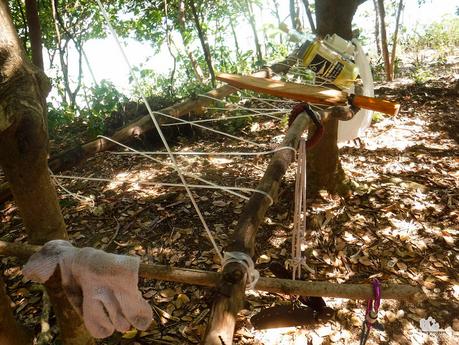
Making Fire
When early humans discovered ways to produce fire, the world changed forever. With fire, he now has the ability to cook delicious and nutritious meals, to warm himself against the cold night, to light his way in the darkness, to protect himself from enemies—and to destroy things.
Creating a fire is an absolutely needed skill if you’re into outdoor adventures. Anything unfortunate can happen in the wilderness—your butane fuel might run out or your high-tech burner might malfunction. You might even need to create a fire to signal rescuers in case something untoward happens.
There are many ways to generate a fire without using a lighter or stove. Probably the most convenient would be using a ferro rod and a piece of steel, which should be in your survival kit. Scrape the ferro rod with the steel to create lots of fiery sparks.
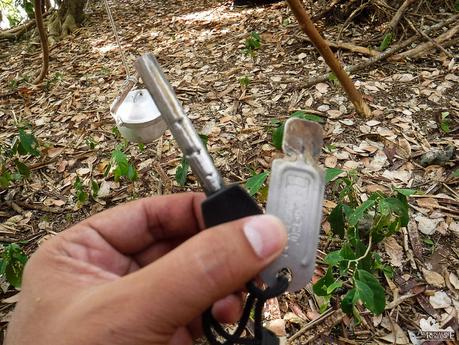
Use flammable items such as dried bamboo and coconut fibers to fuel the fire. Strike the ferro rod close to the kindling so the material will easily ignite. In our observation, the best kindling is the cotton-like doldol fiber in the middle because it catches fire quickly with just a few sparks.
Once the kindling starts to burn, you can add dried leaves, twigs, and eventually branches to keep the fire burning.
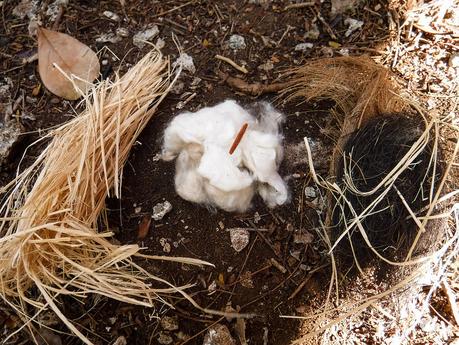
An uncontrolled, carelessly generated fire can be dangerous and disastrous. In fact, careless acts such as throwing a cigarette butt or living a small fire unattended have caused huge fires that decimate entire forests and mountainsides.
Uncontrolled fires can even cause the extinction of a species. In 1819, the crew of the whaleship Essex docked on Charles Island to hunt for food. Helmsman Thomas Chappel set a fire as a prank, but because it was the peak of the dry season, the fire quickly spread out of control. Soon the entire island was burning, forcing the crewmen to return to the Essex.
Many years later, Charles Island remained a charred wasteland and hasn’t recovered. It is believed that the fire caused the extinction of the Floreana Mockingbird.
Obviously, we don’t want that to happen. Ever! So we built a stone fire ring on bare ground. The stones help keep the fire inside the ring and concentrates the heat at the center.
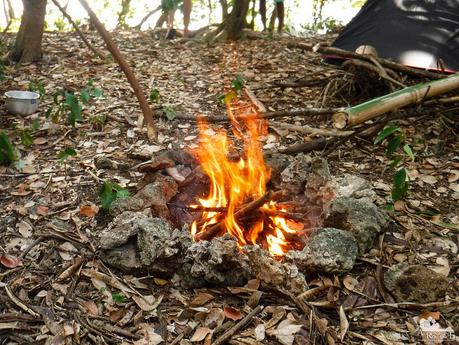
With the fire up and running, Bluewater Sumilon camp assistants Adonis and Jeric started to cook some rice and soup. You will be in good hands with them. They will also teach you a lot of bushcraft skills after this workshop.
Check out how the tripod and the fire ring suspended our cooking utensils perfectly over the fire. We used this bamboo to boil rice—rice and water are placed inside the cavities, covered, and cooked over the fire. It is important to keep the fire slow and steady; too strong or large a file will burn the bamboo.
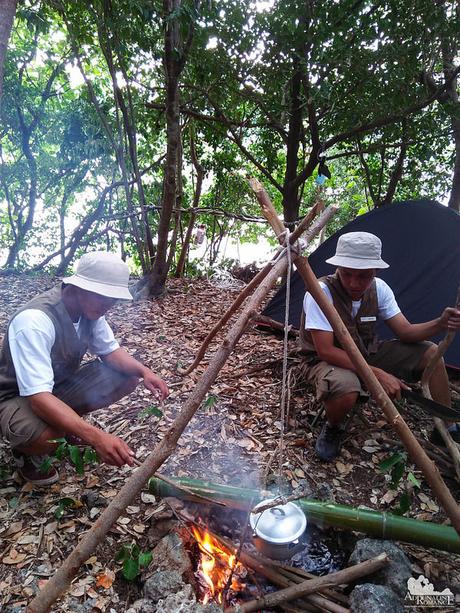
Foraging
Our ancestors, behest of modern technology, learned how to forage and hunt to put food on their table. With the advent of readily available food through commercialization and agriculture, the skill and art of looking for your own food is virtually lost. Still, foraging is a useful skill to acquire; what if you’re lost in the woods for several days and your food supply runs out?
Sir Jing said that these Malabar Almonds (Talisay in Cebuano) are edible and can be a source of emergency food. Malabar leaves and bark can also be concocted into a healthy tea as they contains flavanoids. He also enumerated common foliage that are edible.
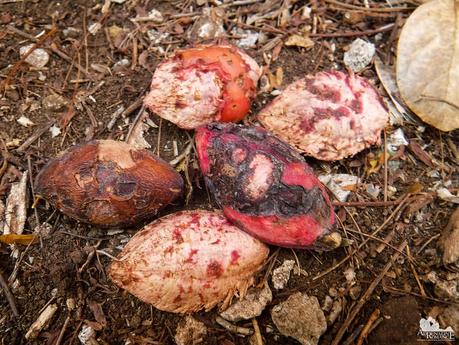
Snares and Traps
Meat is a major source of protein, our body’s building blocks. While we easily get our daily supply of meat from markets and grocery stores, it was way different eons ago. Humans have to animals for food, from small squirrels and slithering snakes to leaping deer wild boars. Since these animals are sentient, humans need to find ways to outsmart them. Thus, they invited snares and traps.
Sir Jing showed us how to make a simple snare with the use of a bamboo, a notched piece of wood, a string, and a shrub..
- A small amount of bait is placed inside the bamboo, a little beyond the wood trigger. A piece of string is knotted into a girth hitch and placed at the entrance of the bamboo tunnel. The trigger and string are tied to a healthy twig, which acts as a spring mechanism.
- A rodent or snake, having sensed the bait, goes inside the tunnel to investigate.
- As the animal crawls farther in to get the bait, it brushes the trigger, causing the trigger to snap up. The action immediately closes the girth hitch, which tightens around the body or limb of the animal.
Ingenious, isn’t it? With these natural items, he actually created a simple machine that works!
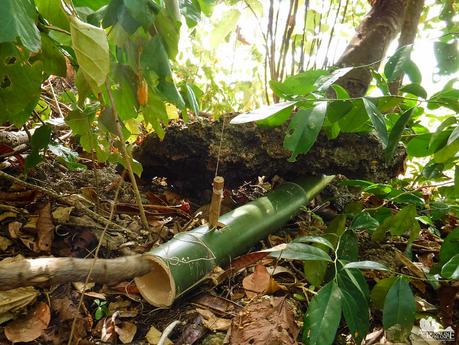
The next day, he showed us another snare design, using nothing but strips of bamboo, a wooden trigger, a girth hitch, and two healthy shrubs.
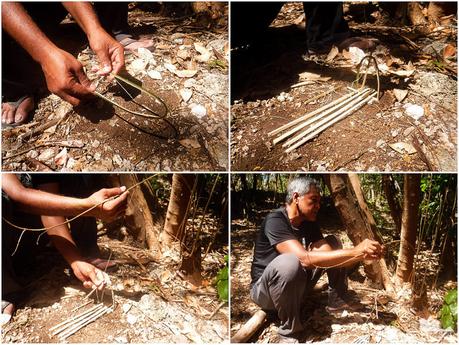
In just 10 minutes, the snare was finished. Bait is placed around the snare, and a small animal inadvertently comes to investigate. Eventually, the animal steps on the camouflaged “floor,” triggering the trap and tightening the hitch around the animal’s body or limb.
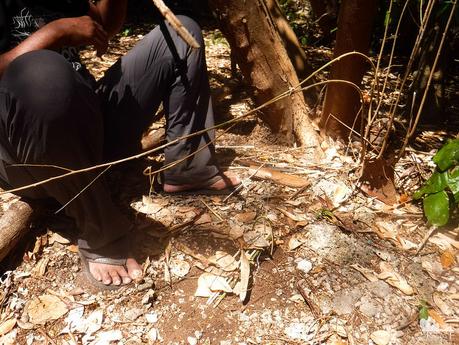
While the bushcrafting workshop was going on, Alexa and Adi played bahay-bahayan with Shaun’s sister Sophia. Bahay-bahayan is a traditional Filipino game in which children pretend they are moms and dads in charge of a household. Thus, they pretend to cook meals, arrange furniture, and more. If played indoors, the kids would probably transform boxes, blankets, and corners into make-believe houses.
Playing bahay-bahayan develops a child’s creativity and sense of responsibility.
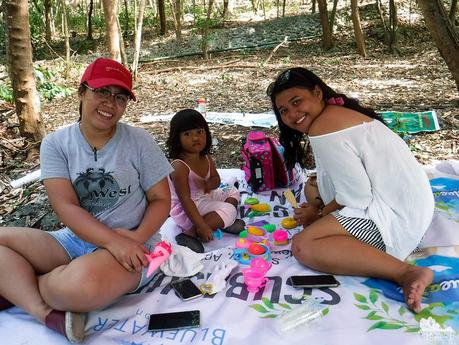
Outdoor Gourmet
Eating in the outdoors is way more fun than doing the same in the comforts of a home kitchen. Cooking a meal in the wilderness requires some planning and preparation. Sometimes, it is a hassle, knowing that you have to carry all your cooking equipment and ingredients with you.
But the resulting dishes are just so mouthwatering. Meals, even the simplest ones, seem to be more sumptuous when prepared and eaten in the outdoors. That night, we had an extra delicious dinner of barbecue and adobo (pork chunks, onions, and garlic boiled in vinegar and soy sauce until the liquid completely evaporates).
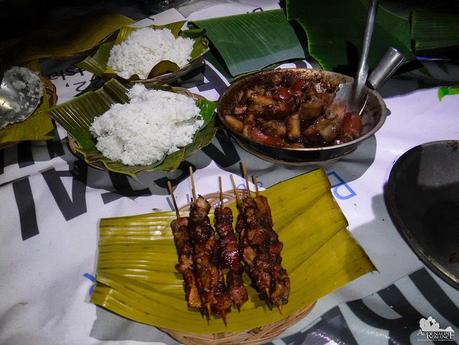
I got first dibs on the bamboo-cooked rice. It smells absolutely wonderful since the rice absorbed the bamboo’s aroma. It also has a unique, slightly herby taste as the grains absorbed some of the pulp’s taste. It beats pot-cooked rice by a mile.
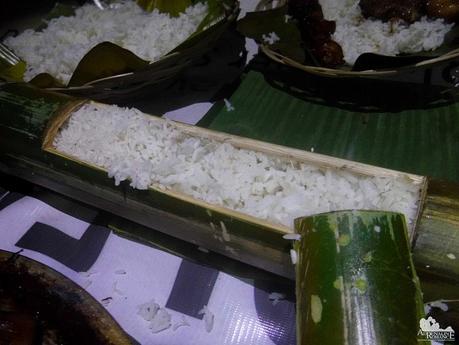
After a hearty dinner, we huddled around the campfire to ward off the growing chill, telling campfire stories and roasting marshmallows.

Sheila and I were the first ones to wake up in the morning. We don’t want to miss out the sunrise, which we consider one of Mother Nature’s most magical spectacles. Every time we see a lovely sunrise, our spirits are energized. We feel prepared and excited to face this weird thing called life.

There’s nothing better than to start the day with a feast. For breakfast, we had fried eggs, sausages, bacon, and hotdogs, all cooked from a fresh campfire. Better yet, Bluewater Sumilon brought us some chilled tea to help cool us off as the day grew warmer.
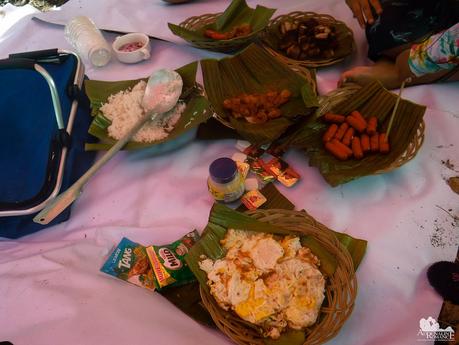
Since we had some free time, Sweetie and I decided to explore the east coast. Despite the fact it’s a weekend, the easter stretch of Sumilon Island was virtually deserted. It was like we owned the place to ourselves.
We love solitude. In one brief silent and tranquil moment, we can really listen to the world.

While the Alexa and the kids enjoyed the island’s facilities for the entire morning, Adonis and Jeric prepared juicy grilled chicken for us. These are native chickens, which are full of flavor. Their meat, however, is tougher than commercial broilers.
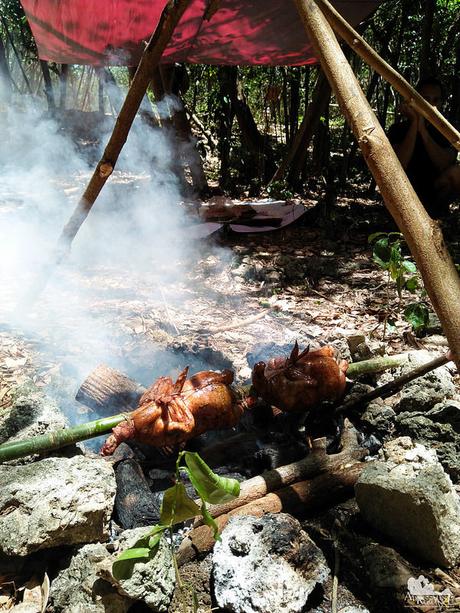
We had a filling lunch of steaming grilled chicken, fried pork, and leftover fried eggs from breakfast. We served them on banana leaves, which are completely natural and biodegradable.
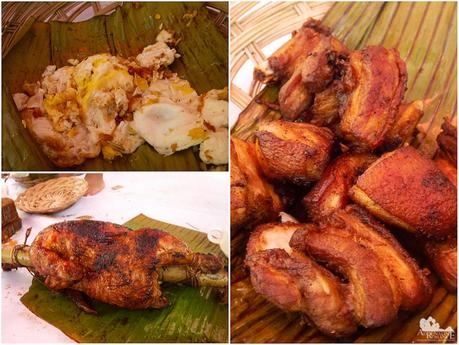
Glamping
Being cast into the great outdoors right away may not be for you. Don’t worry, a whole lot of adventurers who we personally know allowed themselves to gradually adapt to the wildnerness adventure.
Thus, if you feel you need time to truly go for it in the outdoors, you can try out glamping. Glamping allows you to experience camping but with the comforts of a resort or hotel. Yes, you’re still in the outdoors but you’re near modern coveniences.
Bluewater Sumilon has a very nice glamping area near the beach and away from the main suites. The glamping area has bathrooms, electricity, and other amenities that will make you feel comfortable even though you’re in the outdoors.
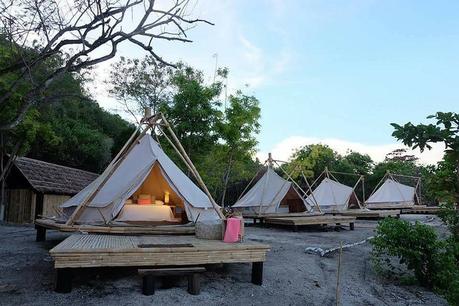
With the workshop over, we had a lot of free time before going back to the mainland later in the afternoon. The girls enjoyed the resort’s pool while the rest of the Camp Red frolicked at the beach. Everyone deserved the best, and Bluewater Sumilon Island Resort delivers the best.

I, on the other hand, went to a secluded area of the island’s eastern shore to observe black tipped reef sharks in the wild. Adonis and Jeric said that these sharks frequent this part of the island during a window between high and low tides.
I was lucky! I observed a whole group of around 20 individual sharks, and I swam in the middle of the group! They look incredibly graceful and predatory. Check out the video below.
Soon, it was time to go back to the mainland. Thank you very much Bluewater Sumilon Island Resort and Camp Red! You have made this weekend adventure enjoyable, memorable, and educational. With bushcraft, you helped us reestablish our roots and taught us to rely on what Mother Nature has readily provided us.
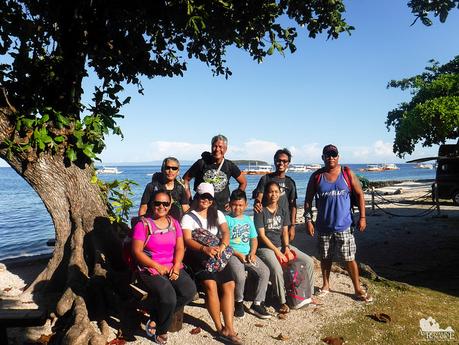
Tips
1. To get to Oslob, take a bus bound for Bato-Santander at the Cebu South Bus Terminal. Tell the driver to drop you off at the entrance of Bluewater Sumilon. On your return trip, you can simply wait for a bus at the roadside. That’s because buses coming from Bato pass by Bluewater Sumilon’s gate.
2. To join Dolpo workshops, reserve rooms, and ask for other information, get in touch with Bluewater Sumilon Island Resort using the following contact details:
- Address: Sumilon Island, Oslob, Cebu, Philippines 6025
- Phone: (6332) 318 3129 / 318 9098
- Mobile: 0917-631-7512 / 0999-885-8337 / 0917-631-7508
- Website: Bluewater Sumilon Island Resort
- Facebook Page: Bluewater Sumilon Island Resort
3. Check out their Facebook Page for exciting promos, new facilities, services, and other information.
4. To book independent bushcraft workshop, contact Mr. Jing Lavilles de Egurrola at 0933-3225005. You can also get in touch with him through his personal Facebook account and through the Camp Red Facebook Group.
Please have the courtesy to introduce yourself first when contacting him. Let him know that we referred you to him through our blog.

